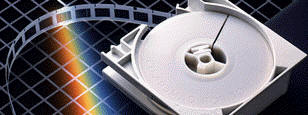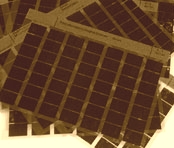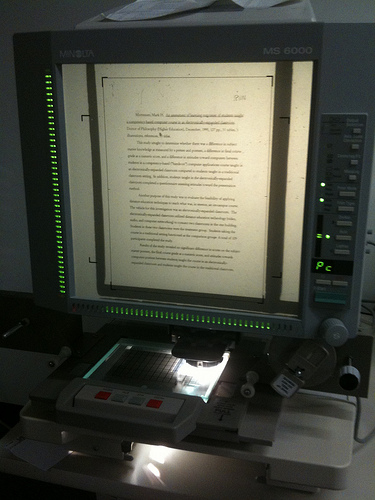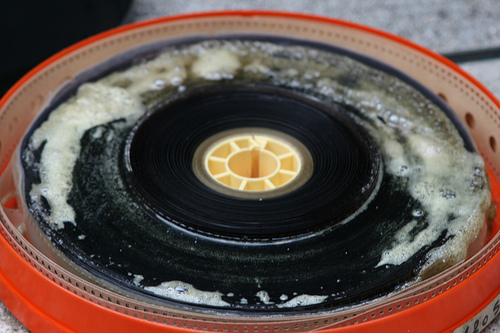Advanced Imaging Solutions / The Microfilm Depot
Document And Microfilm Scanning Service
Since 1984
Call Chris Ferrer For A Free Test And Quote 786-985-2047
10200 State Road 84 #228 Davie Florida 33024
sales@mdepot.com
 Locations We Can Provide Microfilm Microfiche Conversion Services In Texas
Locations We Can Provide Microfilm Microfiche Conversion Services In Texas
Microfilm Scanning Texas | Microfiche Scanning Texas |Document Scanning Texas | Scan Microfiche Texas | Scan Microfilm Texas | Microfilm Scanning Services Texas | Aperture Card Scanning Services Texas | Microfiche Scanning Service Texas | Microfilm Conversion Texas | Microfiche Conversion Texas | Microfilm Cartridges | Document Imaging Texas | Texas | Scan | Scanning | Microfilm | Microfiche | Aperture Cards | Conversion | Cartridges | Microfilm Conversion Texas | Microfiche Conversion Texas
Locations We Can Service
State Of Texas
Cities In Texas
Addison, Alamo, Alamo Heights, Aldine, Alice, Allen, Alvin, Amarillo, Anderson Mill, Andrews, Angleton, Aransas Pass, Arlington, Atascocita, Athens, Austin, Azle, Bacliff, Balch Springs, Bay City, Baytown, Beaumont, Bedford, Beeville, Bellaire, Bellmead, Belton, Benbrook, Big Spring, Boerne, Bonham, Borger, Brenham, Bridge City, Brownfield, Brownsville, Brownwood, Brushy Creek, Bryan, Burkburnett, Burleson, Canyon, Canyon Lake, Carrollton, Carthage, Cedar Hill, Cedar Park, Channelview, Childress, Cinco Ranch, Cleburne, Cleveland, Cloverleaf, Clute, College Station, Colleyville, Commerce, Conroe, Converse, Coppell, Copperas Cove, Corinth, Corpus Christi, Corsicana, Crockett, Crowley, Crystal City, Cuero, Dalhart, Dallas, DeSoto, Deer Park, Del Rio, Denison, Denton, Dickinson, Donna, Dumas, Duncanville, Eagle Mountain, Eagle Pass, Edinburg, Eidson Road, El Campo, El Paso, Ennis, Euless, Fabens, Farmers Branch, Flower Mound, Forest Hill, Fort Bliss, Fort Hood, Fort Stockton, Fort Worth, Fredericksburg, Freeport, Fresno, Friendswood, Frisco, Gainesville, Galena Park, Galveston, Garland, Gatesville, Georgetown, Gladewater, Glenn Heights, Gonzales, Graham, Grand Prairie, Grapevine, Greatwood, Greenville, Groves, Haltom City, Harker Heights, Harlingen, Henderson, Hereford, Hewitt, Hidalgo, Highland Park, Highland Village, Highlands, Hillsboro, Hitchcock, Homestead Meadows South, Hondo, Houston, Humble, Huntsville, Hurst, Ingleside, Iowa Park, Irving, Jacinto City, Jacksonville, Jasper, Jersey Village, Jollyville, Katy, Kaufman, Keller, Kerrville, Kilgore, Killeen, Kingsville, Kirby, La Feria, La Homa, La Marque, La Porte, Lackland AFB, Lake Dallas, Lake Jackson, Lakeway, Lamesa, Lampasas, Lancaster, Laredo, League City, Leander, Leon Valley, Levelland, Lewisville, Liberty, Littlefield, Live Oak, Lockhart, Longview, Lubbock, Lufkin, Lumberton, Mansfield, Marlin, Marshall, McAllen, McKinney, Mercedes, Mesquite, Mexia, Midland, Midlothian, Mineral Wells, Mission, Mission Bend, Missouri City, Monahans, Mount Pleasant, Nacogdoches, Navasota, Nederland, New Braunfels, New Territory, North Richland Hills, Odessa, Orange, Palestine, Palmview South, Pampa, Paris, Pasadena, Pearland, Pearsall, Pecan Grove, Pecos, Perryton, Pflugerville, Pharr, Plainview, Plano, Pleasanton, Port Arthur, Port Lavaca, Port Neches, Portland, Raymondville, Rendon, Richardson, Richland Hills, Richmond, Rio Grande City, River Oaks, Robinson, Robstown, Rockport, Rockwall, Roma, Rosenberg, Round Rock, Rowlett, Sachse, Saginaw, San Angelo, San Antonio, San Benito, San Elizario, San Juan, San Marcos, Santa Fe, Schertz, Seabrook, Seagoville, Seguin, Sherman, Silsbee, Slaton, Snyder, Socorro, South Houston, Southlake, Spring, Stafford, Stephenville, Sugar Land, Sulphur Springs, Sweetwater, Taylor, Temple, Terrell, Texarkana, Texas City, The Colony, The Woodlands, Tomball, Trophy Club, Tyler, Universal City, University Park, Uvalde, Vernon, Victoria, Vidor, Waco, Watauga, Waxahachie, Weatherford, Webster, Wells Branch, Weslaco, West Livingston, West Odessa, West University Place, Wharton, White Settlement, Wichita Falls, Windemere, Woodway, Wylie
Locations We Can Service
State Of Texas
Texas Counties:
Andrews County, Angelina County, Aransas County, Archer County, Armstrong County, Atascosa County,
Austin County, Bailey County, Bandera County, Bastrop County, Baylor County, Bee County, Bell County,
Bexar County, Blanco County, Borden County, Bosque County, Bowie County, Brazoria County,
Brazos County, Brewster County, Briscoe County, Brooks County, Brown County, Burleson County,
Burnet County, Caldwell County, Calhoun County, Callahan County, Cameron County, Camp County,
Carson County, Cass County, Castro County, Chambers County, Cherokee County, Childress County,
Clay County, Cochran County, Coke County, Coleman County, Collin County, Collingsworth County,
Colorado County, Comal County, Comanche County, Concho County, Cooke County, Coryell County,
Cottle County, Crane County, Crockett County, Crosby County, Culberson County, Dallam County,
Dallas County, Dawson County, Deaf Smith County, Delta County, Denton County, DeWitt County,
Dickens County, Dimmit County, Donley County, Duval County, Eastland County, Ector County,
Edwards County, El Paso County, Ellis County, Erath County, Falls County, Fannin County,
Fayette County, Fisher County, Floyd County, Foard County, Fort Bend County, Franklin County,
Freestone County, Frio County, Gaines County, Galveston County, Garza County, Gillespie County,
Glasscock County, Goliad County, Gonzales County, Gray County, Grayson County, Gregg County,
Grimes County, Guadalupe County, Hale County, Hall County, Hamilton County, Hansford County,
Hardeman County, Hardin County, Harris County, Harrison County, Hartley County, Haskell County,
Hays County, Hemphill County, Henderson County, Hidalgo County, Hill County, Hockley County,
Hood County, Hopkins County, Houston County, Howard County, Hudspeth County, Hunt County,
Hutchinson County, Irion County, Jack County, Jackson County, Jasper County, Jeff Davis County,
Jefferson County, Jim Hogg County, Jim Wells County, Johnson County, Jones County, Karnes County,
Kaufman County, Kendall County, Kenedy County, Kent County, Kerr County, Kimble County,
King County, Kinney County, Kleberg County, Knox County, La Salle County, Lamar County,
Lamb County, Lampasas County, Lavaca County, Lee County, Leon County, Liberty County,
Limestone County, Lipscomb County, Live Oak County, Llano County, Loving County,
Lubbock County, Lynn County, Madison County, Marion County, Martin County, Mason County,
Matagorda County, Maverick County, McCulloch County, McLennan County, McMullen County,
Medina County, Menard County, Midland County, Milam County, Mills County, Mitchell County,
Montague County, Montgomery County, Moore County, Morris County, Motley County,
Nacogdoches County, Navarro County, Newton County, Nolan County, Nueces County,
Ochiltree County, Oldham County, Orange County, Palo Pinto County, Panola County,
Parker County, Parmer County, Pecos County, Polk County, Potter County, Presidio County,
Rains County, Randall County, Reagan County, Real County, Red River County, Reeves County,
Refugio County, Roberts County, Robertson County, Rockwall County, Runnels County, Rusk County,
Sabine County, San Augustine County, San Jacinto County, San Patricio County, San Saba County,
Schleicher County, Scurry County, Shackelford County, Shelby County, Sherman County,
Smith County, Somervell County, Starr County, Stephens County, Sterling County, Stonewall County,
Sutton County, Swisher County, Tarrant County, Taylor County, Terrell County, Terry County,
Throckmorton County, Titus County, Tom Green County, Travis County, Trinity County,
Tyler County, Upshur County, Upton County, Uvalde County, Val Verde County, Van Zandt County,
Victoria County, Walker County, Waller County, Ward County, Washington County, Webb County,
Wharton County, Wheeler County, Wichita County, Wilbarger County, Willacy County,
Williamson County, Wilson County, Winkler County, Wise County, Wood County, Yoakum County,
Young County, Zapata County, Zavala County

 What You Should Know About
What You Should Know About  Advanced Imaging Solutions, Inc.- The Microfilm Depot- has various microfiche scanners to convert COM fiche, jacketed microfiche (16mm or 35mm), rewritable fiche, and other types of microfiche.
Advanced Imaging Solutions, Inc.- The Microfilm Depot- has various microfiche scanners to convert COM fiche, jacketed microfiche (16mm or 35mm), rewritable fiche, and other types of microfiche. Vinegar Syndrome And The Adverse Effects It Has On Microfilm And Microfiche
Vinegar Syndrome And The Adverse Effects It Has On Microfilm And Microfiche